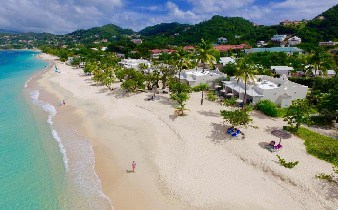Researchers Seek the Deepest Secrets of the Caribbean Sea
Washington — An international team of researchers is working in the Caribbean Sea in June, looking at what may emerge from the core of the planet.
Scientists from Woods Hole Oceanographic Institution (WHOI) and other international research organizations are going to one of the Earth’s deepest mid-ocean ridges, where two of the planet’s tectonic plates are being pulled apart and creating new seafloor. Material from the Earth’s core rises from that opening, more than 6,500 meters beneath the ocean’s surface. The materials and biological communities they detect may offer up clues on how life came into being.
The research site is in the western Caribbean Sea, south of Jamaica and immediately south of the Cayman Islands. The trench, known as the Mid-Cayman Rise, is one of the deepest in the Caribbean. The hydrothermal vent systems that occur at this fissure between the plates are like a seafloor plumbing system that circulates cold seawater down into the hot, newly forming crust emerging from the center of the Earth.
Heat and mineral-rich fluids rise from the vents, and scientists have found in other deep-sea exploration that they can support complex ecosystems of exotic organisms. First discovered in the late 1970s, these organisms don’t rely on the sun to create food and energy from photosynthesis, but rather on chemicals in the hydrothermal vent fluids. Discovery of these life forms called for rewriting the textbooks to reflect that life has greater variety and diverse means for survival than humankind at one time believed.
At the Mid-Cayman Rise, investigation of hydrothermal vents and the life forms they may support began in 2009. Various research missions over the last several years have attracted scientists not only from Woods Hole, near Boston, but also from Japan, Germany and the United Kingdom.
The first step in the current expedition is to find the hot water plumes rising from the trench, says WHOI expedition leader Chris German. Then, they’ll lower a conductivity, temperature and depth (CDT) sensor that will collect water samples and return them to the surface for analysis.
These jets of water, heated by material from the core, might contain iron, manganese and methane. They rise hundreds of meters above the seafloor, dispersing as they are buffeted by deep-ocean currents. Analysis of the deep-sea samples might offer a variety of insights on geologic and oceanographic characteristics of the hydrothermal ecosystem, German explained in a pre-mission description of the research on the WHOI website.
A second phase of the expedition will use the robotic vehicle Nereus to collect geologic samples and imagery from the hydrothermal vents. German said the WHOI crew will also meet mid-sea with a crew from the Japan Agency for Marine-Earth Science and Technology (JAMSTEC).
WHOI describes itself as a private, nonprofit oceanographic institution, at the forefront of scientific investigation of the waters that cover more than two-thirds of the Earth’s surface. The institution receives research grants from a number of U.S. government agencies including the National Oceanic and Atmospheric Administration, the Department of Energy and the U.S. Geological Survey. WHOI also receives some support from scientific institutions in China, Ecuador, India and Pakistan and from a variety of academic and nonprofit organizations.
The WHOI expedition takes place during National Oceans Month, declared by President Obama on May 31, when he reaffirmed the U.S. commitment to scientific research as a means to use the planet’s resources sustainably.
“By making smart choices in ocean management, we can give our businesses the tools they need to thrive while protecting the long-term health of our marine ecosystems,” said the Obama proclamation. “Let us mark this month by renewing those goals, reinvesting in our coastal economies, and recommitting to good stewardship in the years ahead.”
Secretary of State John Kerry also emphasized his commitment to protection of marine resources in honor of World Oceans Day, recognized June 8 by the United Nations. Kerry said the United States is dedicated to addressing pollution, overfishing and ocean acidification.
“Solving these challenges and ensuring that the legacy of our oceans is available to future generations require both global cooperation and individual action,” Kerry said.



